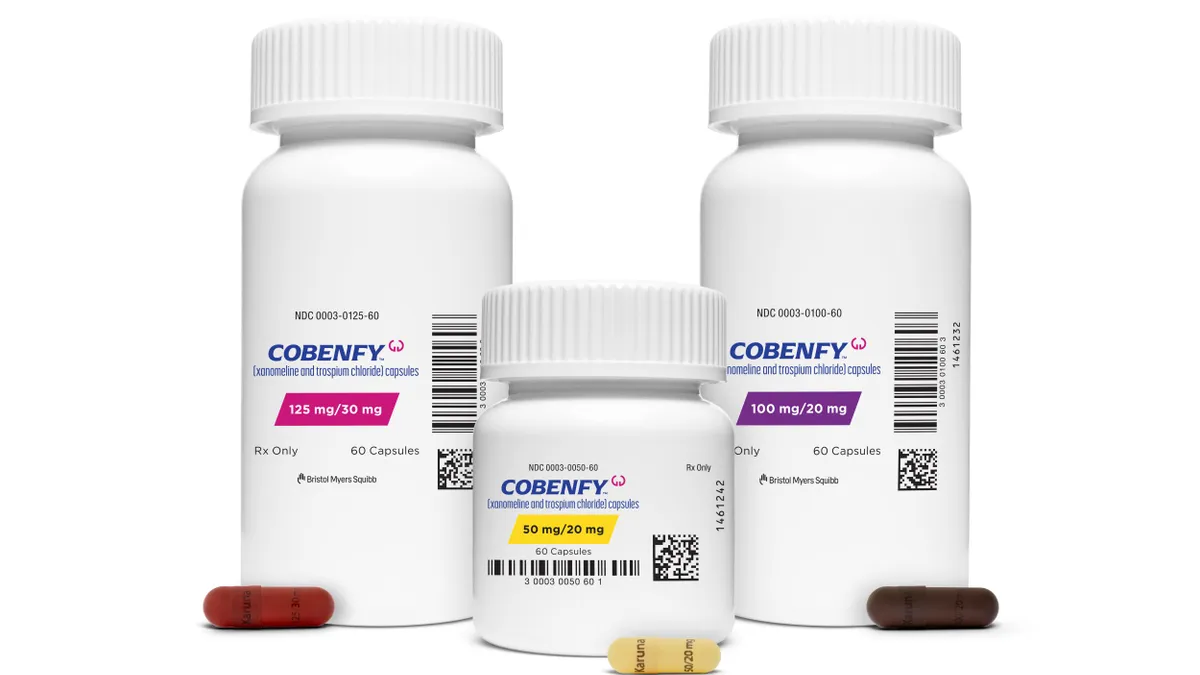 The increasing availability of big data is creating a shift in the clinical research landscape — from trial planning to late-phase — allowing for clinical research professionals to make intelligent, strategic decisions based on real-world evidence (RWE), which is derived from the aggregation and analysis of real-world data (RWD). In addition, RWE is being used to support regulatory decisions and playing an expanding role in developing product value propositions that are driving reimbursement decisions.
The increasing availability of big data is creating a shift in the clinical research landscape — from trial planning to late-phase — allowing for clinical research professionals to make intelligent, strategic decisions based on real-world evidence (RWE), which is derived from the aggregation and analysis of real-world data (RWD). In addition, RWE is being used to support regulatory decisions and playing an expanding role in developing product value propositions that are driving reimbursement decisions.
As the integrity, quality, and timeliness of data collected improves, more and more clinical trials will continue to employ electronic media, such as smartphones and tablets, to collect patient-reported outcomes.
To remain competitive in the market, sponsors will need to think about how they can leverage RWE for maximum value. To do this, sponsors will have to take advantage of technology innovations that allow for collecting, standardizing, and analyzing RWD, which includes information collected from electronic health records (EHRs), patient registries, pharmacy and insurance records, medical claims, biosensors, wearables, and mobile apps.
The Potential of RWD to Unleash RWE Benefits
With emerging applications for trial planning and patient recruitment, RWD sets up a foundation for data collection during studies. In fact, within the healthcare ecosystem, a single study has the potential to reach 100 data assets, each with millions of patients.
Insights gleaned from RWD captured during or as a byproduct of clinical care can improve the efficiency of the drug development cycle, in addition to streamlining clinical trial recruitment, expanding patient access, supporting regulatory filings, and conducting drug safety surveillance. Moreover, the use of RWD has become even more critical since health authorities are increasingly requiring that sponsors gather additional information on a product’s safety, efficacy, and optimal use after it is on the market.
So, how can sponsors effectively realize the full potential of RWD, and ultimately the benefits of RWE, while overcoming barriers such as privacy laws, technical complications, and evolving regulations?
With the right technology, infrastructure, and support, RWD can be collected, stored, analyzed, and reported, bringing benefits of RWE to clinical research and commercialization decision making. The myriad challenges in adopting RWE into trials range from data quality issues, such as imprecise and inconsistent data, to poor analysis and study design.
Many organizations and government groups, including the Patient Centered Outcomes Research Institute, the National Patient-Centered Clinical Research Network, and the National Institutes of Health Precision Medicine Cohort, are working to improve the quality of RWE to enable stakeholders in healthcare to make more informed decision to benefit patients.
A Deloitte study found that 54% of respondents from biopharma companies said a project is underway to develop and/or significantly improve RWE capabilities, while 33% said an RWE capability currently exists, and only minor updates/improvements are needed.1 The use of RWE throughout drug development could give specific insight into a drug’s efficiency and patient outcomes.
RWD Improves Enrollment Process for Clinical Trials
Enrollment processes for clinical trials can consume up to 40% of the industry’s clinical trial budget.
Sponsors often struggle to identify the best sites and enroll the target number of patients, often due to competing trials and low participation rates. Most study timelines need to be doubled from their original estimate to meet patient recruitment goals, since more than one-third of sites under-enroll, according to the Tufts Center for the Study of Drug Development. Leveraging RWD can improve enrollment in three ways.
First, through a protocol feasibility assessment, researchers can use RWD to estimate the size of the available patient population, given the inclusion/exclusion criteria. Second, the criteria can be applied against de-identified patient data from providers’ EHR systems to determine eligible patients by provider, allowing sponsors to focus on sites that serve a population that aligns with the protocol criteria. Lastly, the software can be programmed to alert physicians to suitable patients within their practices, thus giving providers the opportunity to consent and enroll prospective participants into the trial. By leveraging RWD, sponsors can bring a more strategic approach to trial planning and recruitment through targeted analyses, leading to less reliance on traditional models.
An Alternative Approach to Observational Research
The availability of RWD, driven by the high degree of EHR adoption, presents an opportunity for sponsors to conduct observational research that supports prospective, retrospective, and hybrid designs. Identifying what RWD already exists that can supplement or drive a study forward, can also increase overall efficiency in the research study. For example, most post-trial information on patients who participated in Phase III studies are lost once the trial closes since their physicians are no longer entering data into case report forms in the trial’s electronic data capture system. Yet, RWD makes it possible to continue following trial participants even after their last trial-related visit because the physician’s system can continue coding patients’ health records against the same unique identifier used in the clinical trial.
Mapping multiple EHRs, for example, to an integrated database allows data to be collected for extended periods of time on many patients, with little burden on sites, physicians, and patients. This could be used following any pivotal trial that incorporates a surrogate endpoint for a long-term outcome, such as overall survival or progression-free survival.
In the case of retrospective studies, availability of many years of medical history contained in the EHR data allow researchers to analyze already collected data, instead of having to wait to follow patients through their disease trajectory.
Enhancing feasibility and patient recruitment through RWD analyses, as well as using readily accessible RWD for emerging research applications, are just the first steps in fully leveraging technology to generate meaningful and impactful RWE. The application of RWE offers advantages in trial planning and is one of many benefits that a technology-enabled platform brings. A robust RWE technology platform can aggregate large, disparate data sets into a data model, and provide analytics to support the entire clinical and commercial continuum.
While the diversity and efficiency of using RWD to positively influence clinical research is clear, understanding how these applications can best be leveraged within a cohesive RWE strategy is best explored through a fit-for-purpose, comprehensive technology platform.
Delivering Value with an RWE Technology Platform
As big data solutions advance the healthcare ecosystem, sponsors must build or have access to a technology platform that generates a continuum of insights from RWD sources, such as EHRs. A fit-for-purpose RWE technology platform can serve as a foundation that can maximize return on investment by supporting:
Assessment of intended product use
Ad hoc analytics
Long-term safety studies
Virtual registries
Patient profiles
Treatment Patterns
Protocol feasibility
Patient recruitment
Comparative effectiveness
A high-performing platform consists of components that ingest and process data, while bringing together multiple RWD feeds into one source. Next, tools can be applied to analyze and transform RWD into valuable RWE more efficiently, allowing researchers to quickly gather and act on insights. Building an effective platform requires a multidisciplinary approach, with expertise in RWE strategy, big data technology, feasibility, observational research, health economics, and epidemiology. Attributes of high-performing platforms include cohort management, data aggregation, machine learning, natural language processing, and advanced data visualization capabilities all within a secure and privacy compliant environment.
Adopting a RWE technology platform can assist in performing commercial analytics and establishing integrated clinical registries. Moreover, a platform can provide additional solutions that are highly scalable, support diverse RWD assets, allow segregation or shared data assets at the study level, and control access rights for applications, dashboards, and insights. Overall, an effective RWE strategy requires the right technology and the expertise of RWD specialists that can tailor data assets to meet study endpoints.
Conclusion
A new era is emerging in which clinical practice and clinical research inform one another through RWE. While some challenges exist — for instance, data sources remain fragmented and systems are diverse — sponsors should view RWE as an efficient and cost-effective tool to support the success of clinical trials.
For sponsors to derive the full benefit of RWD, it is essential to use technology-enabled research applications and a fit-for-purpose RWE platform.
A platform, such as what we’ve described, has the potential to enhance efficiency, cost-effectiveness, and reliability of RWD captured from observational studies to pragmatic trials. By adopting these strategies, sponsors can drive research efficacy, enhance a product’s value story, provide evidence for targeted stakeholder engagement, and achieve key commercial objectives for their products.(PV)
Editor’s Notes:
1 Getting real with real-world evidence. 2017 RWE benchmarking survey. Deloitte LLP, 2017. http://www2.deloitte.com/uk/en/pages/life-sciences-and-healthcare/articles/real-world-evidence-benchmarking-survey.html
2 Impact Report, Tufts Center for the Study of Drug Development, Volume 15, Number 1, January/February 2013
ICON plc is a global provider of drug development solutions and services to the pharmaceutical, biotechnology and medical device industries. The company specializes in the strategic development, management, and analysis of programs that support clinical development — from compound selection to Phase I-IV clinical studies. With headquarters in Dublin, Ireland, ICON currently, operates from 97 locations in 38 countries and has approximately 13,250 employees.
For more information, visit iconplc.com.



















